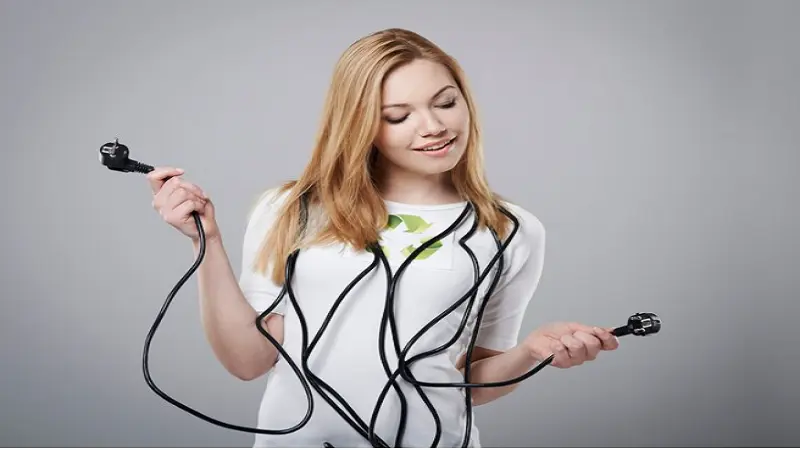The Internet of Things (IoT) has revolutionized how we interact with technology, connecting everything from smartphones to home appliances and industrial equipment to the internet. As this vast network of connected devices expands, IoT standards and connecting the dots: unraveling iot standards and protocols play a critical role in ensuring devices communicate effectively, securely, and efficiently. However, navigating these standards can be complex, especially as new protocols emerge and interoperability issues come to the forefront.
This article will demystify the standards and connecting the dots: unraveling iot standards and protocols that underpin IoT, exploring how they work, the challenges they address, and why they matter. Let’s dive into the ecosystem of IoT standards and protocols, understanding the key components that make IoT systems work seamlessly.
Table of Contents
ToggleThe Foundation of IoT: What Are Standards and Protocols?
In simple terms, standards are guidelines set by organizations to create consistency across devices and systems, ensuring they function in harmony. Protocols are the specific rules that dictate how data is exchanged over a network. Together, they enable the interaction and interoperability that make IoT possible.
For IoT devices to function cohesively, standards and protocols are essential for handling connectivity, data transmission, security, and interoperability. The variety of IoT applications—ranging from healthcare and smart homes to industrial automation—necessitates a flexible yet reliable framework, which is why IoT standards are both numerous and evolving.
The Role of Interoperability: Why It’s Important
Interoperability is the capacity for different IoT devices to understand and work with each other, even when they come from different manufacturers. Without interoperability, IoT devices would be confined within isolated ecosystems, limiting their potential and usability. For instance, a smart thermostat and a connected lighting system would only function seamlessly if they shared a common communication protocol or interoperable standard.
Achieving interoperability is not straightforward, as different devices may support various connecting the dots: unraveling iot standards and protocols based on their intended functions. Efforts from organizations like the Institute of Electrical and Electronics Engineers (IEEE) and Internet Engineering Task Force (IETF) strive to address this through universally accepted standards that promote compatibility across devices.
Common IoT Protocols: A Breakdown
Numerous protocols exist to facilitate communication in IoT systems, each with unique advantages and limitations. Here are some of the most prominent:
It is popular in applications where resources are tight, such as smart cities and wearable devices.
- HTTP/HTTPS (Hypertext Transfer Protocol): While not exclusive to IoT, HTTP/HTTPS remains one of the most prevalent protocols due to its widespread use on the web. It’s suitable for more robust devices but is generally less efficient than protocols specifically designed for IoT.
- Zigbee: A low-power, mesh network protocol, Zigbee is frequently used in home automation and smart lighting. With a range of up to 100 meters, it’s ideal for applications that require limited bandwidth over a short distance.
- LoRaWAN (Long Range Wide Area Network): Designed for long-range communication with low power consumption, LoRaWAN is used in wide-area IoT networks, such as smart agriculture and industrial IoT applications.
The Importance of Security Protocols
With IoT devices collecting vast amounts of data, security is paramount. IoT security protocols protect devices from unauthorized access and data breaches, safeguarding sensitive information and the integrity of systems. Some of the primary security standards include:
- TLS/SSL (Transport Layer Security/Secure Sockets Layer): Widely used in internet communications, TLS/SSL encrypts data exchanged between devices, ensuring confidentiality and protecting against interception by malicious actors.
- DTLS (Datagram Transport Layer Security): Adapted from TLS for use with datagram connecting the dots: unraveling iot standards and protocols like UDP, DTLS provides secure communication for applications where low-latency is essential, such as real-time data transfer in industrial IoT.
- In IoT, it’s suitable for securing data across devices with IP-based communication.
Challenges in IoT Standards and Protocols
While protocols and standards provide structure, several challenges persist in the IoT landscape:
- Fragmentation: The variety of protocols can lead to fragmentation, where different devices are incompatible due to the use of different standards. This can hinder interoperability, complicating IoT deployments.
- Scalability: As IoT networks grow, protocols need to handle the increased volume of devices without sacrificing performance. Scalability is particularly challenging in industrial IoT applications where networks may contain thousands of devices.
- Security Vulnerabilities: Each protocol comes with its own set of security implications. For example, resource-constrained devices may lack the computational power for robust security measures, making them vulnerable to attacks.
- Standardization: IoT lacks universal standards, with many competing protocols serving different purposes. While organizations are working to establish cohesive frameworks, the rapidly evolving nature of IoT technology can make standardization difficult.
Emerging IoT Standards and Initiatives
Several organizations and alliances are striving to streamline IoT standards. The Open Connectivity Foundation (OCF), for instance, develops standards that promote interoperability across IoT ecosystems, working closely with other groups like the Industrial Internet Consortium (IIC) and AllSeen Alliance.
In recent years, Matter (formerly known as Project CHIP) has emerged as a promising initiative to unify IoT standards for smart home devices. Led by big names like Google, Amazon, and Apple, Matter aims to bridge the gap between different ecosystems, making it easier for consumers to integrate devices from various brands.
IoT Protocols in Action: Real-World Applications
- Smart Homes: In home automation, protocols like Zigbee and Bluetooth Low Energy (BLE) are common. They allow devices like smart lights, thermostats, and security systems to communicate within a local network.
- Industrial IoT (IIoT): MQTT and OPC-UA (Open Platform Communications Unified Architecture) are popular in industrial settings. These connecting the dots: unraveling iot standards and protocols support real-time data exchange, which is crucial for predictive maintenance and process optimization. This protocol’s low power requirements make it ideal for remote sensors that monitor soil conditions, temperature, and moisture.
8. Future Trends: Where Are IoT Standards Heading?
- Edge Computing: As IoT data volumes grow, edge computing offers a solution by processing data closer to its source.
- 5G and IoT: The deployment of 5G networks provides IoT with higher bandwidth, lower latency, and more reliable connectivity, making real-time applications more feasible. 5G-enabled IoT will require adaptations in existing protocols to handle the new network capabilities.
- AI and Machine Learning: AI integration is becoming vital in IoT for tasks like predictive analytics and anomaly detection. IoT protocols will need to support seamless data exchange between devices and AI platforms, fostering intelligent automation across industries.
9. The Road to Unified IoT Standards
The push for standardized IoT protocols is gaining momentum, with collaborative initiatives and open-source projects leading. However, complete unification remains challenging, as new technologies continually reshape the landscape.
For now, businesses and consumers should focus on adopting protocols that align with their specific needs, while staying informed about developments in IoT standards. Industry-wide collaboration and ongoing innovation will ultimately be the key to achieving a cohesive IoT ecosystem.
Conclusion
IoT standards and protocols are the backbone of the connected world, enabling devices to communicate, operate, and function harmoniously. While the landscape of IoT protocols is diverse and complex, understanding the fundamental connecting the dots: unraveling iot standards and protocols and standards can empower businesses and consumers to make informed decisions about their IoT investments.
As IoT evolves, the importance of robust, secure, and interoperable standards will only grow. By connecting the dots between diverse devices, IoT protocols will drive the next wave of innovation, transforming industries, enhancing lives, and reshaping how we interact with technology in our everyday environments.



